Discover Rabat: A Journey Through Time
Join us for a captivating free walking tour that unveils the rich history and vibrant culture of Rabat, the heart of Morocco.
Time
3 Hours
Stops
9 Places
Distance
12.3 km
Hassan Tower
Begin your tour at the iconic Hassan Tower, an unfinished minaret of a mosque that dates back to the 12th century, offering a glimpse into the historical aspirations of the Almohad dynasty.
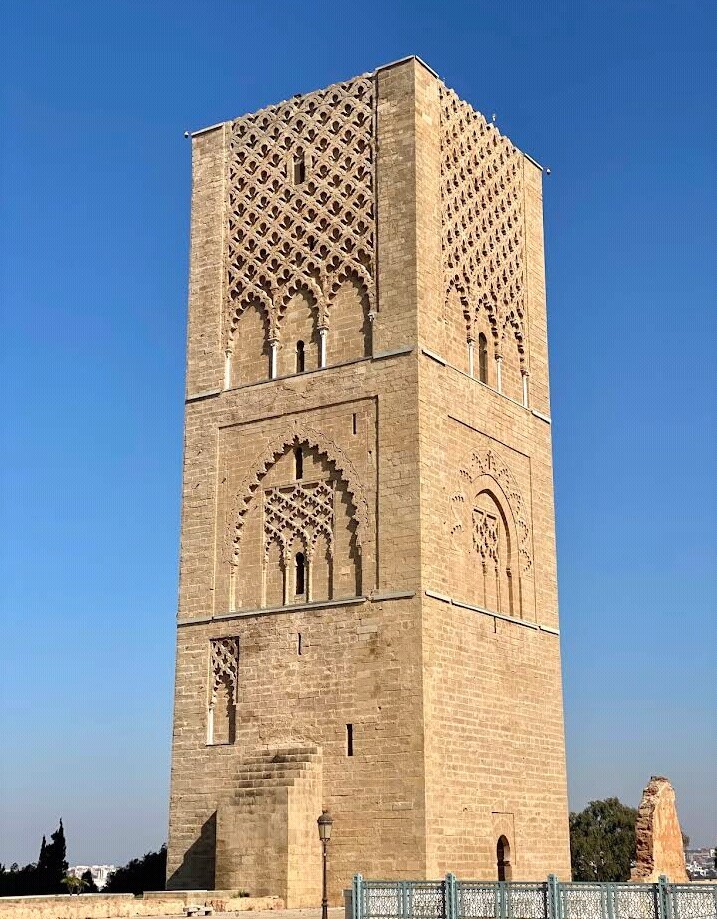
Hassan Tower (Source: Google Maps)
Hassan Tower, an iconic symbol of Rabat, is a minaret that began construction in 1195 under the Almohad Caliph Yaqub al-Mansur. Intended to be the world's largest mosque, it was never completed, yet it stands tall at 44 meters. The tower's exquisite design features intricate carvings and is made of red sandstone, showcasing the architectural aspirations of the Almohad dynasty. Surrounding the tower are the remnants of columns that were part of the mosque, giving visitors a glimpse into the grandeur that could have been. The site is not only a historical landmark but also a UNESCO World Heritage site, attracting visitors who wish to connect with Morocco's Islamic heritage.
Mausoleum of Mohammed V
Just a short walk from Hassan Tower, this beautiful mausoleum houses the tombs of King Mohammed V and his sons, and is a masterpiece of modern Alaouite dynasty architecture.
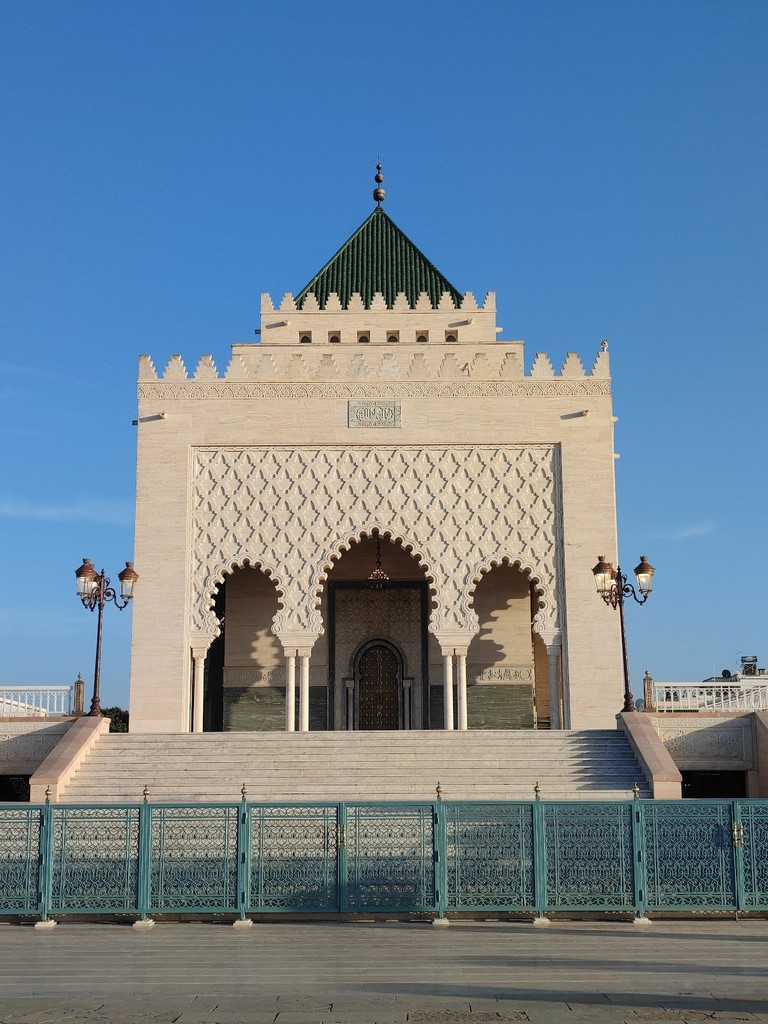
Mausoleum of Mohammed V (Source: Google Maps)
The Mausoleum of Mohammed V is a stunning architectural masterpiece that honors the late King of Morocco, Mohammed V, and his sons, King Hassan II and Prince Abdallah. Completed in 1971, the mausoleum is a beautiful blend of traditional Moroccan and modern architectural styles, featuring exquisite tile work, intricate carvings, and a striking green roof symbolizing Islam. The mausoleum is surrounded by lush gardens and is a significant site of national pride, where visitors can pay their respects to the revered king who played a crucial role in Morocco's independence. The interior houses the tombs, which are adorned with rich fabrics and are a testament to the royal heritage of the Alaouite dynasty.
Rabat Archaeological Museum
A brief stroll will take you to the Rabat Archaeological Museum, which showcases an impressive collection of artifacts from Morocco's ancient past, providing insight into its rich history.
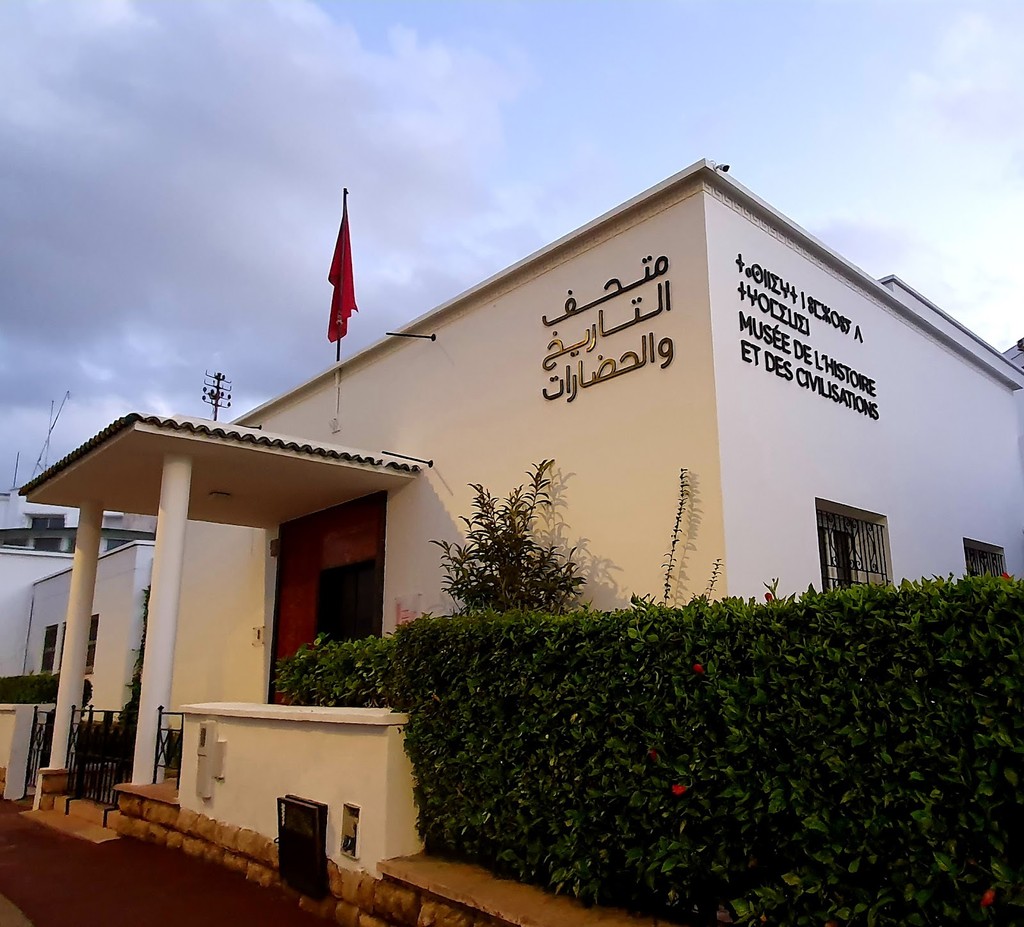
Rabat Archaeological Museum (Source: Google Maps)
The Rabat Archaeological Museum is home to one of the most comprehensive collections of artifacts from Morocco's ancient civilizations. Established in 1932, the museum showcases a wealth of items ranging from prehistoric to Islamic periods, including Roman mosaics, ancient jewelry, and inscriptions that narrate the country's rich history. The museum's modern architecture provides a fitting backdrop for the treasures within, allowing visitors to explore Morocco's past through its artistic and historical artifacts. Notably, the museum houses the famous 'Mausoleum of the Unknown Soldier' and a section dedicated to the Berber culture, making it a vital stop for anyone interested in understanding the diverse influences that have shaped Morocco.
Chellah
Explore the ancient ruins of Chellah, a historical complex with remnants from Roman and Islamic times, surrounded by lush gardens and offering a serene break from the city.
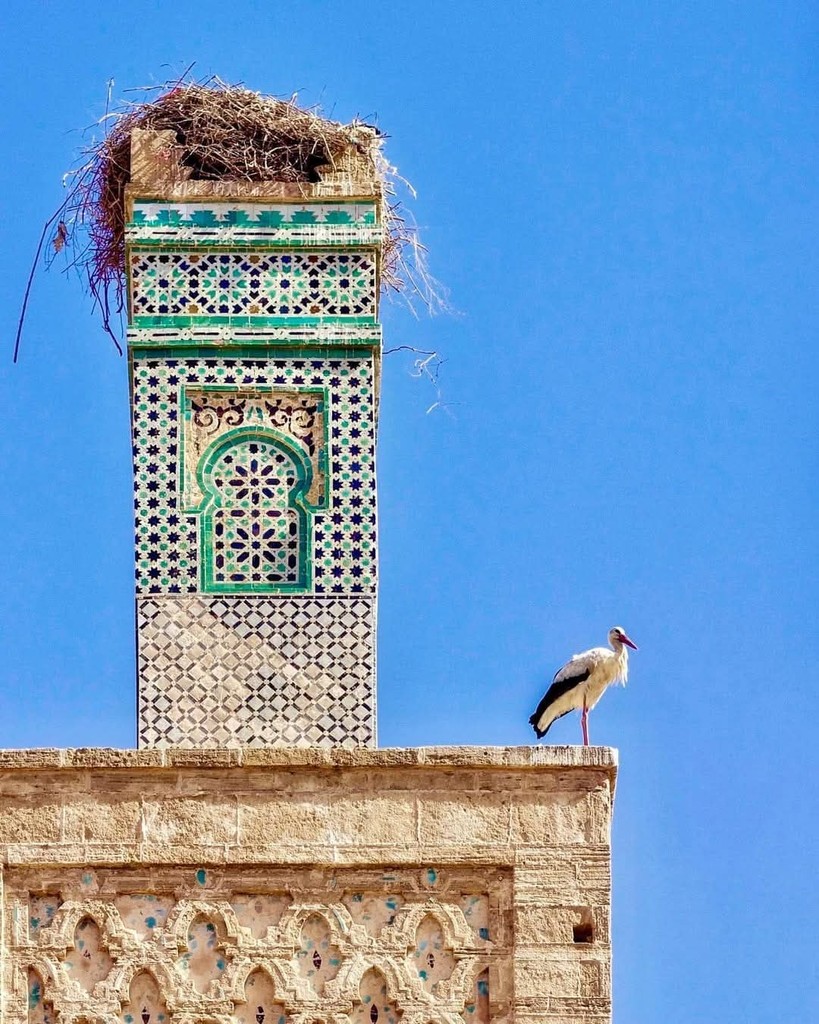
Chellah (Source: Google Maps)
Chellah is an ancient historical site that reflects the rich tapestry of Rabat's past, blending Roman and Islamic heritage. Originally a Roman city called Sala Colonia, it was abandoned in the 7th century and later transformed into a necropolis for the Merinid dynasty. The site features well-preserved ruins, including ancient columns, a Roman temple, and intricate Islamic structures, all set amidst lush gardens. Visitors can explore the serene atmosphere, where storks nest atop the ruins, symbolizing the site's harmony with nature. Chellah is a UNESCO World Heritage site and offers a unique glimpse into the coexistence of different cultures throughout Morocco's history, making it a must-visit for history enthusiasts.
Royal Palace of Rabat (exterior view)
Continue to the Royal Palace, the official residence of the King of Morocco, where you can admire its grand architecture from the outside, as the interior is not open to the public.
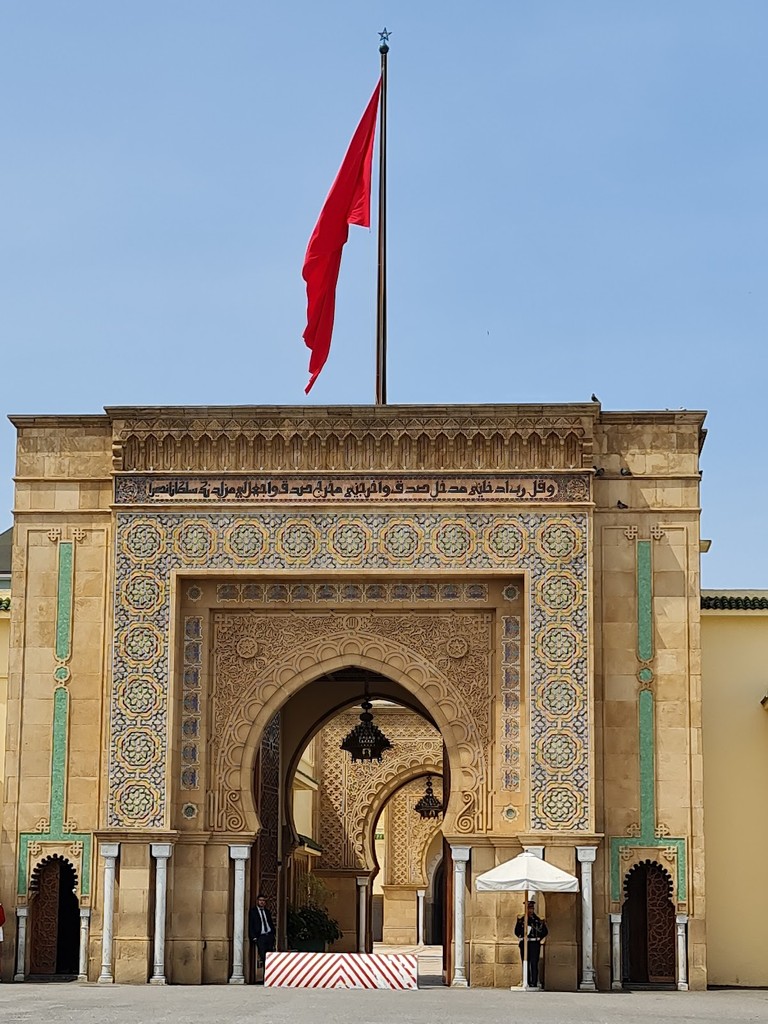
Royal Palace of Rabat (exterior view) (Source: Google Maps)
The Royal Palace of Rabat, known as Dar al-Makhzen, is the official residence of the King of Morocco and a stunning example of Moroccan architecture. Although visitors cannot enter the palace, the exterior is a sight to behold, with its grand gates, beautiful gardens, and ornate decorations that reflect traditional Moroccan design. The palace complex includes several buildings, including the royal stables and the palace of the king's advisors. The intricate tile work, carved wooden doors, and lush gardens surrounding the palace are a testament to the craftsmanship and cultural significance of the royal residence. The palace is not only a functional space but also a symbol of Morocco's monarchy and its rich history.
Bab Rouah
Visit Bab Rouah, also known as the "Gate of the Winds," a monumental city gate that now serves as an art gallery, showcasing contemporary Moroccan art.
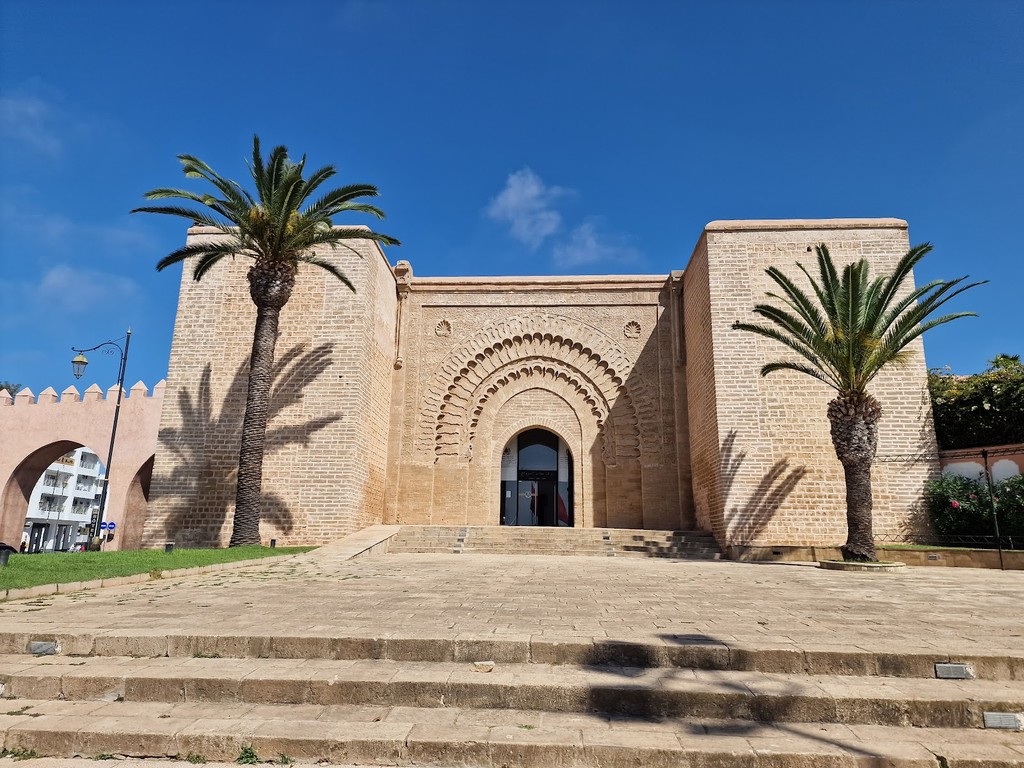
Bab Rouah (Source: Google Maps)
Bab Rouah, or the 'Gate of the Winds,' is one of Rabat's most significant historical gates, serving as a majestic entrance to the city. Built in the 18th century during the reign of Sultan Moulay Ismail, this monumental gate showcases a blend of Islamic and European architectural styles, featuring grand arches and intricate designs. The gate has been restored and now serves as an art gallery, promoting contemporary Moroccan art and culture. Visitors can appreciate the artistic displays while also marveling at the gate's historical significance, which once welcomed travelers and dignitaries into the city. Bab Rouah stands as a symbol of Rabat's rich cultural heritage and its evolution over the centuries.
Jardin d'Essais Botaniques
Take a leisurely walk through the Jardin d'Essais Botaniques, a lush botanical garden that offers a peaceful escape and a chance to see a variety of plant species.
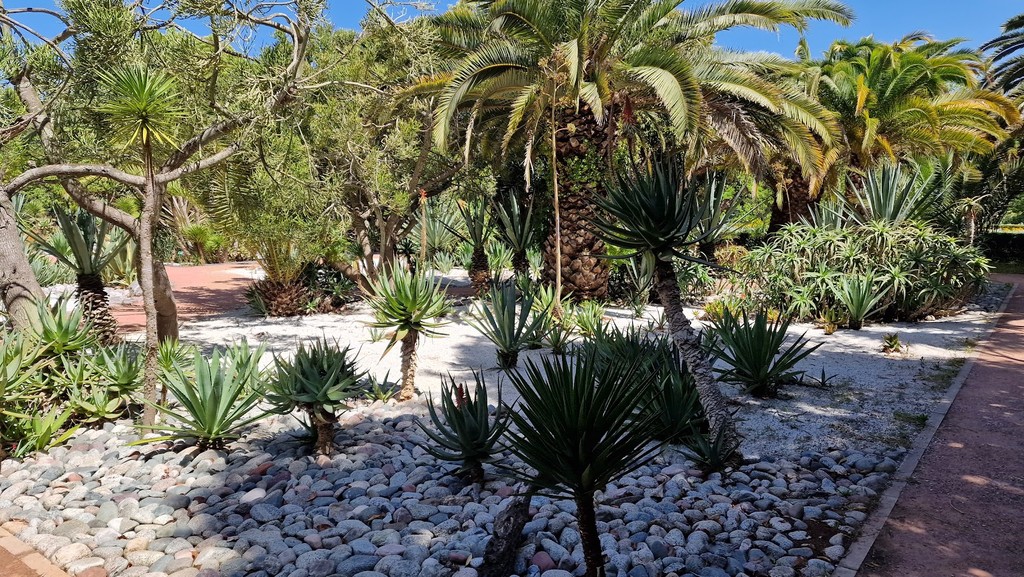
Jardin d'Essais Botaniques (Source: Google Maps)
The Jardin d'Essais Botaniques, or Botanical Experiment Garden, is a tranquil oasis in Rabat, showcasing a diverse collection of plant species from around the world. Established in the 1910s, the garden spans several hectares and serves as a research facility as well as a public park. Visitors can stroll through beautifully landscaped pathways, surrounded by exotic plants and trees, many of which are labeled for educational purposes. The garden is not only a place for relaxation but also plays a crucial role in the conservation of plant biodiversity. It offers a serene escape from the bustling city, making it a perfect spot for nature lovers and those seeking to enjoy the beauty of Morocco's flora.
Avenue Mohammed V
Stroll along Avenue Mohammed V, a bustling street lined with shops and cafes, perfect for people-watching and soaking in the local atmosphere.
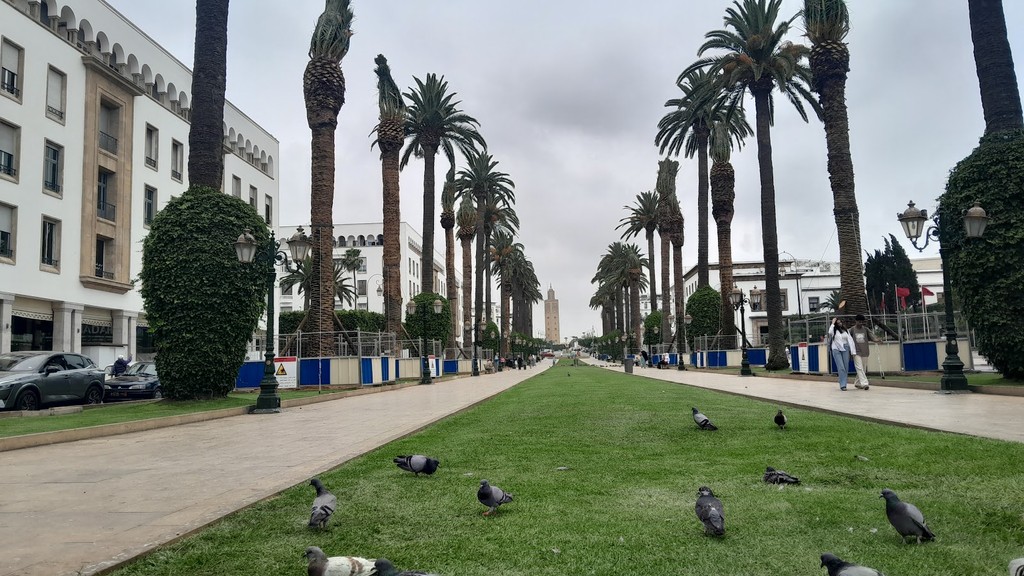
Avenue Mohammed V (Source: Google Maps)
Avenue Mohammed V is one of Rabat's main thoroughfares, bustling with activity and life. Lined with shops, cafes, and government buildings, this vibrant street is a hub of social interaction and commerce. The avenue is known for its beautiful architecture, showcasing a mix of modern and traditional Moroccan styles. As you walk along Avenue Mohammed V, you'll encounter various cultural landmarks, making it an ideal place for people-watching and soaking in the local atmosphere. The street also serves as a venue for public events and celebrations, reflecting the dynamic spirit of Rabat. It's a perfect representation of the city's blend of history and modernity.
Kasbah of the Udayas
Conclude your tour at the Kasbah of the Udayas, a picturesque fortress with narrow alleys, blue-and-white painted houses, and stunning views of the Atlantic Ocean.
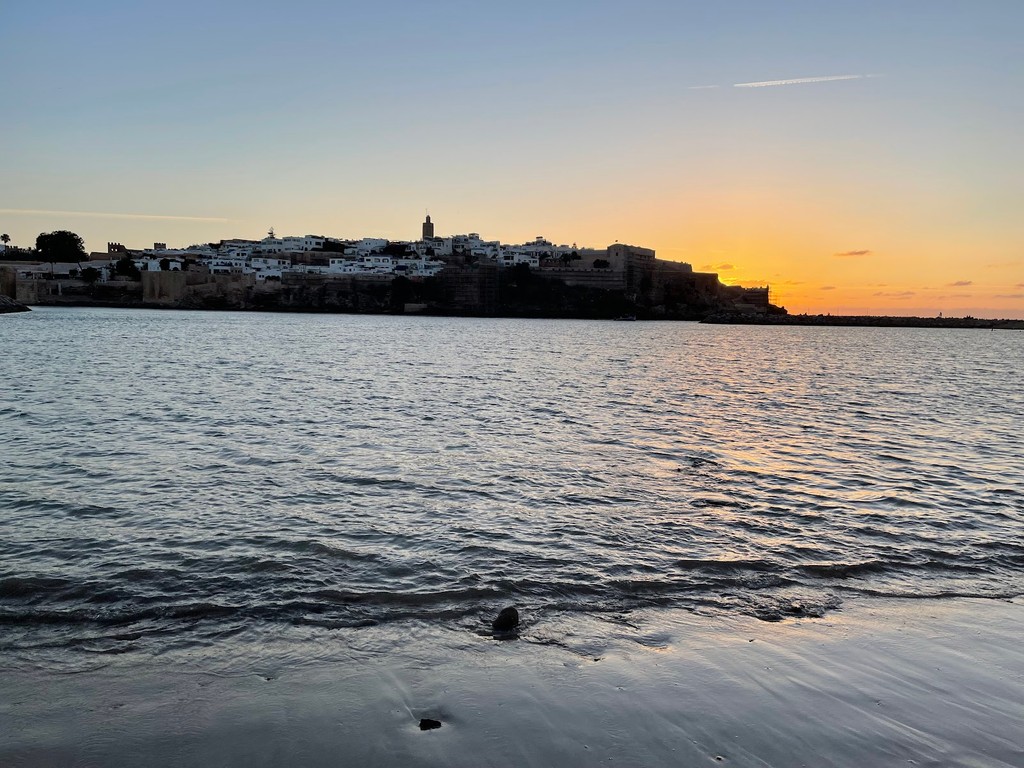
Kasbah of the Udayas (Source: Google Maps)
The Kasbah of the Udayas is a historic fortress that offers a glimpse into Rabat's past. Built in the 12th century, it features narrow alleys, stunning blue-and-white painted houses, and overlooks the Atlantic Ocean. The kasbah served as a military stronghold and a residence for the Udayas, a group of warriors who played a significant role in Moroccan history. Today, visitors can explore the kasbah's picturesque streets, visit the Museum of the Udayas, and enjoy breathtaking views from the ramparts. The kasbah is not only a historical site but also a cultural hotspot, with cafes and artisan shops that reflect the local craftsmanship. It stands as a testament to Rabat's rich heritage and its strategic importance as a coastal city.

Your travels, your rules.
Create your own Free Walking Tours.
Set your preferences, distances and anything you want to do or see.
Completely free, no payment required.